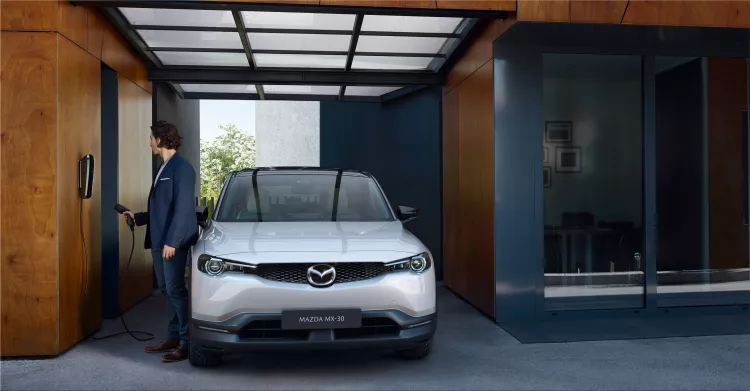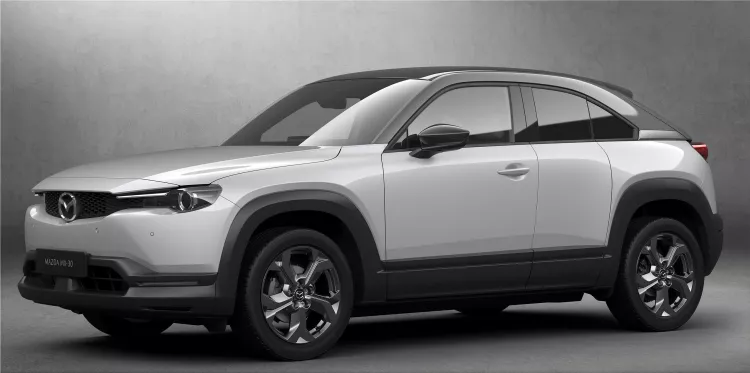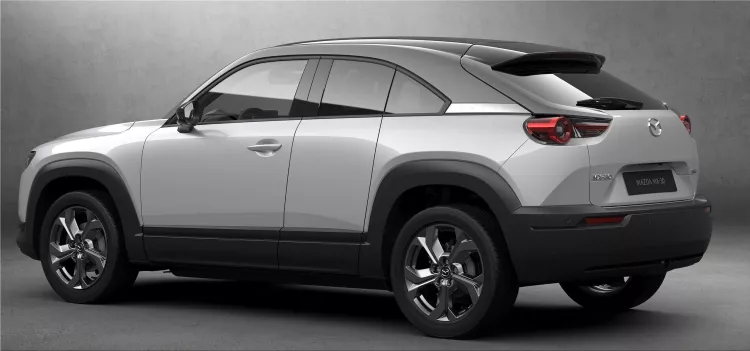Revealed at the end of last year at the Tokyo Motor Show, the Mazda MX-30 has just taken a new step. This Wednesday, the Japanese brand announced the start of production of the electric car at the factory in Ujina, Hiroshima, Japan. The all-electric Mazda MX-30 will arrive in European dealerships in the second half of 2020.
The Mazda MX-30 is available in four trim levels and sold from 33,490 euros excluding bonuses.
The new Mazda MX-30 is equipped with e-Skyactiv - Mazda's new electric drive technology. The front-wheel drive train combines a 107 kW (145 hp) AC synchronous electric motor with a 35.5 kWh lithium-ion battery, which enables the Mazda MX-30 to achieve a range of up to 262 kilometres in a pragmatic WLTP cycle. The Skyactiv-Vehicle Architecture of the Mazda MX-30 was specially tailored to complement the effortless, fully electric driving behaviour of the car.
Equipped with a Combo charging port, the MX-30 can be recharged to 80% in about 40 minutes on a DC fast-charging station.
In 2021, Mazda plans to add a version with a range extender, and the small electric engine should noticeably increase the range. The Japanese do not yet give technical data or prices for this version.
Volkswagen Group Components is giving a glimpse of a prototype of its mobile charging robot for electric vehicles. It is a visionary concept that will successfully expand the charging infrastructure for electric cars over the next few years.… Continue reading
Volvo started manufacturing the C40 Recharge fully electric car at its facility in Ghent, Belgium. The C40 Recharge is Volvo's second fully electric vehicle and the next in a succession of new electric vehicles to be introduced in… Continue reading
The company eeMobility, which specializes in charging solutions for electrified company cars, has presented its complete solution "eeFlatNeo" for intelligent charging at home. In addition to charging with green electricity… Continue reading
For their latest innovation, Ford has created a prototype of a robotic charging station that can be activated by the driver's mobile phone without the need to exit the vehicle. Combining this technology with autonomous vehicles could one… Continue reading












